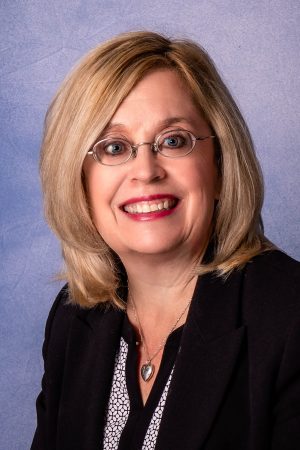By Laura Fitzgerald
Unique Challenges for Thumb-Area Philanthropy

In the rural, picturesque Thumb region of Michigan, community foundations make an invaluable impact in their coverage areas, touching every aspect of community life.
Representing all of Sanilac, Tuscola, Huron, St. Clair and Lapeer counties, and the rural portions of Oakland, and Macomb counties, community foundations are often the primary source of philanthropic dollars and are the engines behind projects large and small. They provide hundreds of thousands of dollars each year for new computers in schools and equipment for sports teams; staff provide consulting that help groups of ordinary people create nonprofits; grant dollars build homes, fund parks and trail improvements, stock food pantries’ shelves, and revitalize whole blocks of picturesque lakeside towns.
But the aspects of rural life that make these areas unique also present logistical challenges in the form of limited donor pools, few large corporate partners, and tight operational budgets. That’s why foundation leaders are getting creative and collaborative in their search for solutions to the biggest challenges facing their organizations.
How Community Foundations Impact their Communities
Community foundations use a wide range of endowed, non-endowed and project funds to support hundreds of local organizations and projects annually.
Kyle Caldwell, President and CEO of the Council of Michigan Foundations, pointed to community foundations’ multiple roles in Michigan communities, including fostering collaboration among nonprofits, individuals, and policymakers, to achieve positive impacts.
“Michigan is home to a robust and highly connected network of community foundations that serve as conveners, bringing residents together to ensure their voices are helping to inform equitable solutions to their most pressing issues,” Caldwell said. “They also serve as partners to nonprofits and at times, resources to our policymakers to share what they are hearing and seeing within the community. They are leaders in philanthropy, connecting people and ideas with organizations and partners to create transformative and lasting change.”
Several Thumb-area foundations got their start through Youth Advisory Councils – a group of young people who facilitate grants and scholarships that encourage youth development – which remain strong and active to this day. Collectively, these foundations facilitate hundreds of scholarships, grants, and programs that help high school, college, and trade students further their education.
These programs even extend to the youngest learners. Lapeer Community Foundation Executive Director Nancy Boxey said nearly 5,000 PreK-4th grade students are enrolled in the foundation’s LEAF program, where each student grows their dedicated educational savings account from the initial $25 seed money for college or career training expenses.

Sanilac County Community Foundation also impacts their local children by hosting the Sanilac Imagination Library, as well as approximately 190 scholarships for high school and college students to further their education, according to Executive Director Joshua Robinson.
This year, Tuscola County Community Foundation’s Youth Advisory Council will top more than $1 million in funding for youth development programs since the organization’s founding almost 30 years ago, funding everything from local schools’ robotics programs to equipment for sports teams, said Executive Director John Hunter.
Hunter still remembers walking through a Tuscola-area school district where the foundation had awarded several grants for the schools’ programs.
“I think as we walked through the building, and my board was able to see the various programs that grant making has touched over the years, like in their automotive technology program, their livestock program, their printing program, robotics, – to see students actually use the equipment, it was eye-opening for myself and my board to see how we’re impacting students,” he said.
Another common priority area among community foundations is community and economic prosperity. Some rural foundations encourage development by helping talented workers stay in or relocate to their counties. Four Counties Community Foundation – which includes the more rural areas of St. Clair, Macomb, Oakland and Lapeer counties – helped address a shortage of worker housing by partnering with Michigan State Housing Development Authority to build a house for an Imlay City family, said Executive Director Kathy Dickens.
The Huron County Community Foundation is using a multi-pronged approach to attract talent by playing into rural communities’ strengths – such as easy access to nature, a slower pace of life, and a low cost of living – and capitalizing on the rise of remote work following the COVID-19 pandemic, said Executive Director Mackenzie Price. The foundation is currently transforming a formerly derelict corner of downtown Bad Axe into a vibrant community hub complete with co-working spaces for remote workers, a community boardroom available for rent by local organizations, and several residential apartments aimed at providing housing.
Beyond these tangible benefits, community foundations also provide consulting and expertise for other nonprofits and organizations to further their missions. In Sanilac County, Robinson said their foundation began providing fiscal sponsorship for a local organization as they work towards nonprofit status. The foundation also facilitates Women Who Care, a group of women that meet for fundraising events that benefit local nonprofits.
New this year, the Lapeer County Foundation launched a series of nonprofit capacity building workshops. Leaders were invited to network, share ideas, and learn more about organization management, governance, fundraising, planning, and more to help them successfully operate their nonprofits. Boxey said an average of 75 people attended each workshop.
“Not only did (participants) learn, they also networked,” Boxey said. It’s breaking down those silos. It’s lightbulbs going off.”

Thumb-Area Community Foundations Face Lack of Operational Funds
Michigan’s Thumb poses a unique set of challenges for the community foundations that operate in these mostly small, rural counties. With tiny populations and a lack of large corporations or other sizeable foundations, these community foundations face a comparatively limited donor pool. This means most of these foundations are operating on tight budgets, making it a challenge to provide competitive wages and benefits to attract talent.
These Thumb-area foundations are staffed by part-time or contract positions and/or one or two full-time staff. Operational dollars tend to come from small endowments and nominal administrative fees that hover around 1.5% of the organization’s total budget.
Randy Maiers is the CEO of the Community Foundation of St. Clair County. “I’m concerned about the future and stability of community-based philanthropy,” he said. “Not just in Michigan’s Thumb, but throughout small towns in Michigan. These communities can’t afford to lose their community foundation staff because they can’t offer healthcare and competitive wages.”
A lack of staff limits these foundations’ capacity to grow and nurture placed-based philanthropy. Additionally, low wages and a lack of benefits such as healthcare discourage younger workers who need to keep up with the cost of living from pursuing careers in philanthropy, especially when the private sector offers higher wages and better benefits.
“The nonprofit sector is competing for talent with the for-profit sector,” Robinson said. “We need to attract high-quality talent right from the get-go and have them come and work for our organization so we can grow our organization.”
Some of these foundations employ staff who are at the end of their careers and have other ways of securing healthcare, such as through a spouse. While this might work for the foundation’s needs at the moment, Nancy Boxey of Lapeer said she worries how their and other foundations like theirs will encourage the next generation to get involved in philanthropy.
“If we look at succession planning for the foundation, who are we going to get to fill these spots?” Boxey said.
Unique Challenges Lead to Collaboration, Creative Solutions
Part of that solution is to get creative with staffing solutions. Price, who is the only full-time staffer at the Huron foundation, said her conversations with other rural foundations have revealed the strengths of employing part-time staffers. This could include seeking workers across a variety of age ranges and career needs, such as parents with school-aged children who value the flexibility of part-time work. Price has also been in conversation with the Huron Council on Aging about providing funding to pay the wages of senior citizens who would like a part-time encore career at the foundation.

Boxey said she makes sure to offer benefits in addition to regular wages, such as flexibility in work schedules and environments, and generous time off.
Foundation leaders are also turning inward to assess their own practices. In Sanilac County, Robinson said one of their largest priorities for this year is an operational review of the foundation’s policies, budget, and practices, with the goal of identifying inefficiencies and improving their operations.
“We need to be really intentional about how we can best utilize (funds). And if there is a need to increase capacity, perhaps we should do some fundraising for our operational budget,” Robinson said. “That is something that does not get talked about often in community foundations, is fundraising for yourself. It’s typically fundraising for others, which is a great cause, but you have to take care of your own house before you can help others.”
Boxey said the Lapeer foundation’s board has grown more receptive in recent years to using dollars from their endowed administrative fund to market to the community the need to donate to the foundation for its talent and operational needs.
Several foundation directors also noted a lack of funds to produce marketing content directed at potential donors, who are more likely to give if they see the value the foundations have in their communities.
Four County Community Foundation Executive Director Kathy Dickens said to tackle this challenge, foundations can leverage their unique ability to bring a wide variety of individuals and organizations to the table for positive change.
“As for solving big issues like food security, affordable housing, mental health, and transportation needs, foundations serve as conveners. We cannot make meaningful changes on these fronts alone, as we do not have the financial or personnel capacity to do so independently,” Dickens said. “It is by leveraging partnerships with other organizations that we can move the needle.”
To find your local community foundation visit either of these websites:
